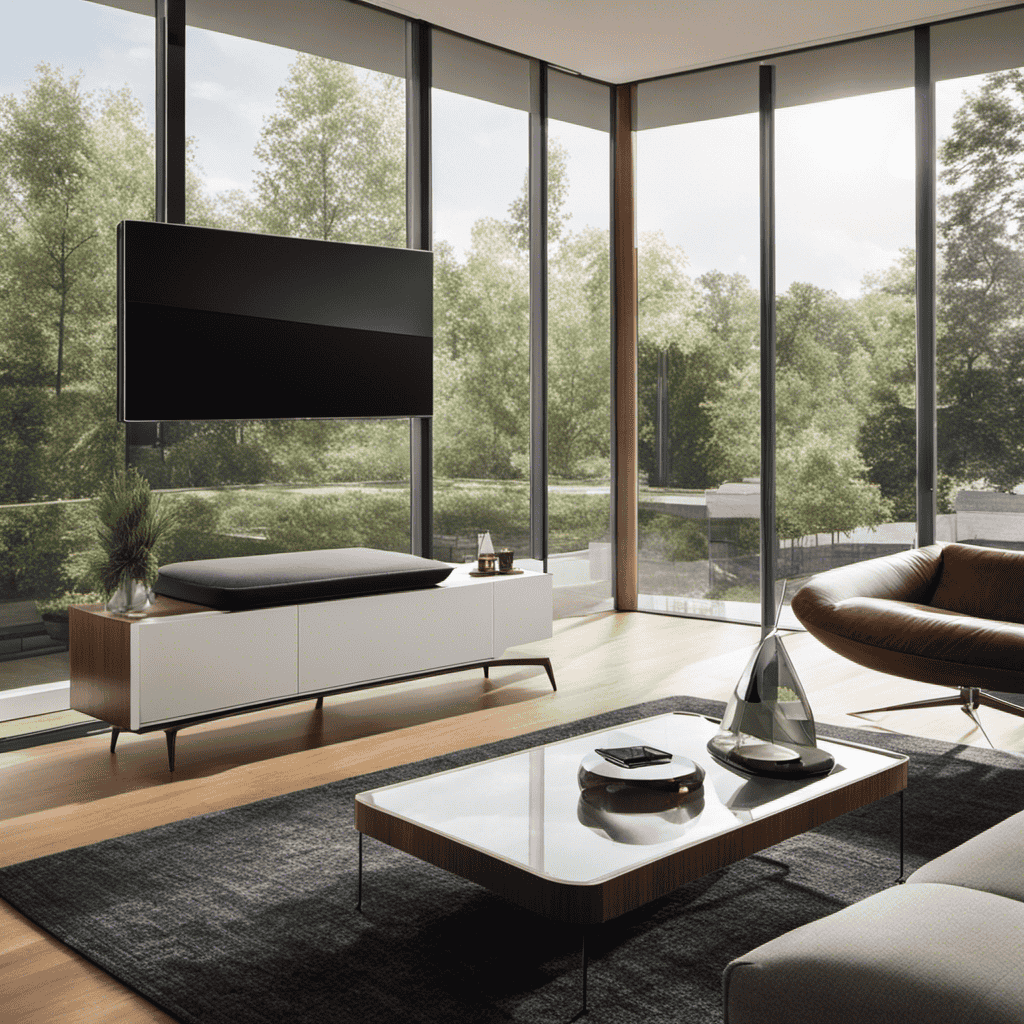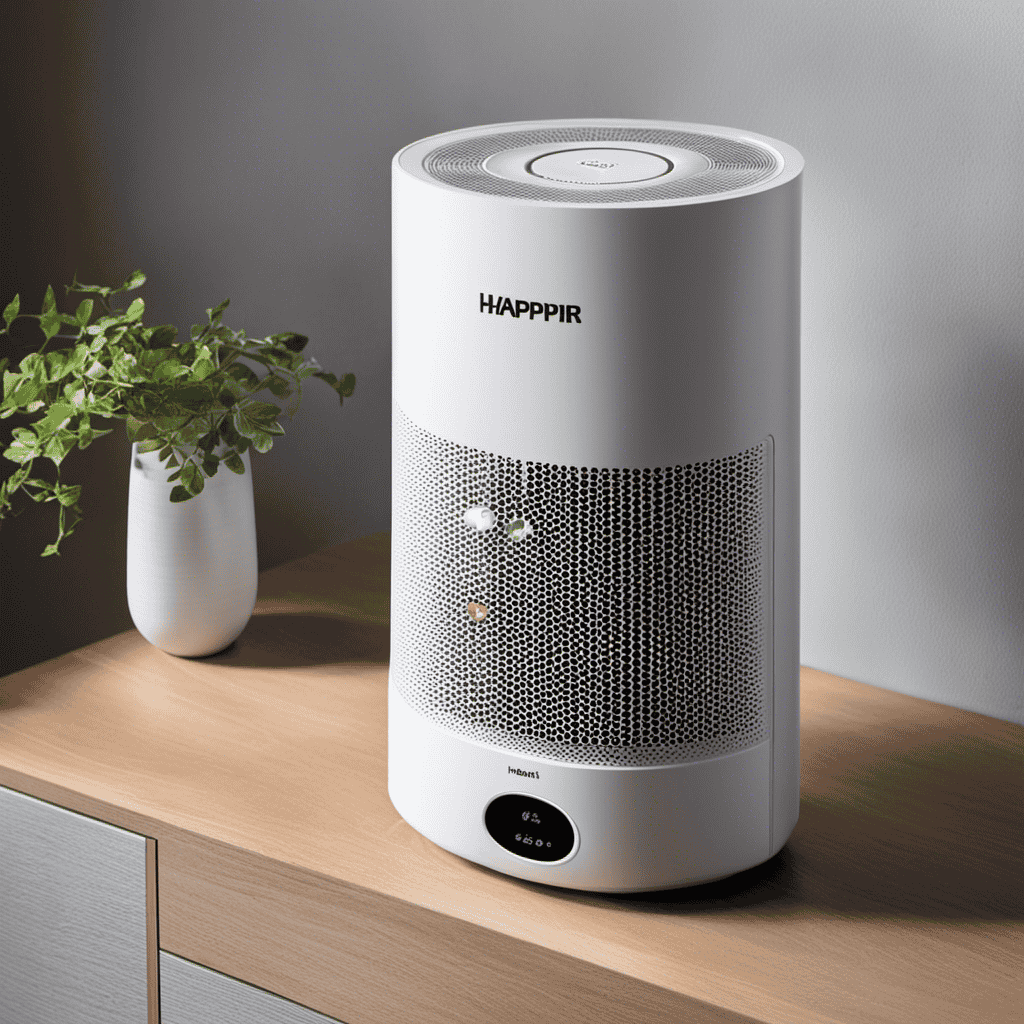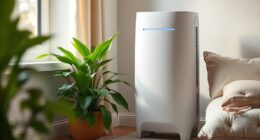Are you aware that utilizing the ion setting on your air purifier can greatly enhance the air quality you experience? This article will explore the advantages, scientific aspects, and possible drawbacks of utilizing the ion setting on an air purifier.
With a better understanding of how ions work to purify the air, you can make informed decisions about optimizing your air purifier’s performance. Let’s explore the world of ions and discover how they can enhance the air quality in your home.
Key Takeaways
- The ion setting on an air purifier releases negatively charged ions into the air, which attach to airborne particles and make them heavier.
- This helps to reduce allergens like pollen, dust, and pet dander, improving breathing and reducing allergies.
- The ion setting also neutralizes odors like smoke and cooking smells, making the air fresher.
- It is important to be aware of potential risks and concerns of using the ion setting, such as the production of ozone and the need for proper ventilation.
Benefits of Using the Ion Setting on an Air Purifier
Using the ion setting on an air purifier can provide several benefits for improving indoor air quality.
The ion setting works by releasing negatively charged ions into the air, which attach themselves to airborne particles, making them heavier and causing them to fall to the ground or become trapped in the air purifier’s filters.
This helps to reduce the number of allergens, such as pollen, dust, and pet dander, in the air. By reducing these allergens, the ion setting can lead to improved breathing and reduced allergies for individuals who suffer from respiratory conditions or allergies.
The ions also help to neutralize odors, such as smoke or cooking smells, by binding to the odor-causing molecules and eliminating them from the air.
Overall, using the ion setting on an air purifier can significantly improve indoor air quality and create a healthier living environment.
How Does the Ion Setting Improve Air Quality
By activating the ion setting on an air purifier, you’ll notice an improvement in the overall quality of the air. Air purifier ionizers release negatively charged ions into the air through the ionization process. These ions attach themselves to airborne particles like dust, pollen, and pet dander, making them heavier and causing them to fall to the ground or stick to surfaces. This effectively removes them from the air you breathe.
Additionally, the ions released by the air purifier can also help neutralize and remove odors, smoke, and other harmful pollutants. The ion setting works alongside the other filtration technologies in the air purifier to provide a more thorough cleaning of the air in your home or office.
Regularly using the ion setting can significantly improve the air quality and create a healthier environment for you and your family.
Understanding the Science Behind the Ion Setting
When the ion setting is activated, you’ll experience an improvement in air quality due to the release of negatively charged ions. These ions are generated through a process called ionization, which is a key component of air purification technology.
The ionization process works by releasing electrons into the air, creating negative ions. These negatively charged ions then attach themselves to airborne particles, such as dust, allergens, and bacteria. The attachment of the ions to these particles causes them to become heavier and fall to the ground or be easily captured by the air purifier’s filters.
This process effectively reduces the number of harmful particles in the air, resulting in cleaner and fresher indoor air. Additionally, the negative ions also help to neutralize and eliminate odors, further enhancing the overall air quality.
Potential Risks and Concerns of Using the Ion Setting
To ensure your safety and well-being, it’s important to be aware of the potential risks and concerns associated with the ion setting on your air purifier. While the ion setting can be effective in removing pollutants from the air, it also presents certain risks that need to be considered. One concern is the production of ozone, a harmful gas that can cause respiratory issues. Another risk is the creation of harmful byproducts when ions react with other substances in the air. These byproducts can have adverse health effects when inhaled. It is crucial to carefully read the manufacturer’s instructions and guidelines before using the ion setting, and to ensure proper ventilation in the room. Regular maintenance and cleaning of the air purifier is also necessary to minimize any potential risks.
| Potential Risks and Concerns |
|---|
| Production of ozone |
| Creation of harmful byproducts |
| Adverse health effects |
| Read manufacturer’s instructions |
| Ensure proper ventilation |
Tips and Best Practices for Using the Ion Setting on Your Air Purifier
Here are some tips and best practices for effectively using the ion setting on your air purifier:
-
Understand the function: The ion setting releases negatively charged ions into the air, which attach to positively charged particles like dust, pollen, and pet dander, making them heavier and causing them to fall to the ground.
-
Placement is key: Position your air purifier in a central location away from walls and obstructions to ensure proper air circulation. This allows the ions to reach all areas of the room effectively.
-
Regular maintenance: Clean the ionizer plates or collection plates regularly to prevent the accumulation of particles. This ensures that the air purifier continues to work efficiently in reducing allergens.
-
Combine with other filtration methods: While the ion setting can improve effectiveness, it is recommended to use it alongside other air purification methods like HEPA filters for maximum reduction of allergens.
Frequently Asked Questions
Can the Ion Setting on an Air Purifier Remove Allergens Like Pollen and Pet Dander?
The ion setting on an air purifier can effectively reduce indoor air pollutants such as pollen and pet dander. It works by releasing negatively charged ions that attach to these allergens, causing them to become heavier and fall to the ground.
Is It Safe to Use the Ion Setting Continuously, or Should It Be Used Intermittently?
Using the ion setting on an air purifier continuously may pose potential health risks. It’s important to consider the effectiveness and safety of air purifiers with ion settings compared to those without before making a decision.
Can the Ion Setting on an Air Purifier Help Eliminate Odors in the Room?
Using the ion setting on an air purifier can help eliminate odors in the room. It is more effective than air fresheners as it reduces indoor pollutants, improving air quality.
Are There Any Specific Maintenance Requirements for Air Purifiers With an Ion Setting?
As for maintenance requirements, air purifiers with an ion setting require regular cleaning of the ionizer plates to ensure optimal functionality. This helps remove contaminants from the air and keeps your purifier working efficiently.
Can Using the Ion Setting on an Air Purifier Have Any Impact on Energy Consumption?
Using the ion setting on an air purifier can improve air quality by releasing negatively charged ions that attach to airborne particles. However, it may increase energy consumption and long-term health effects are still being studied.
Is the Ion Setting on an Air Purifier the Same as Using an Ionizer?
The ion setting on an air purifier is not the same as using an ionizer. The ion setting on an air purifier releases ions to attach to airborne particles and make them easier to capture. Meanwhile, what an ionizer does is release negative ions into the air to remove pollutants and improve air quality.
Conclusion
In conclusion, the ion setting on an air purifier can be a valuable tool in improving the quality of the air we breathe. By releasing negatively charged ions into the air, it helps to neutralize harmful pollutants and allergens, creating a cleaner and healthier environment.
However, it is important to be mindful of potential risks and concerns associated with this setting, such as the production of ozone. By following tips and best practices, we can maximize the benefits of the ion setting while minimizing any potential drawbacks.










